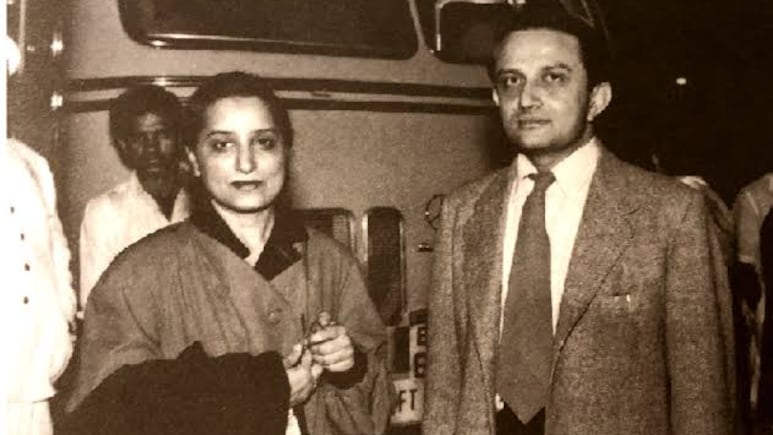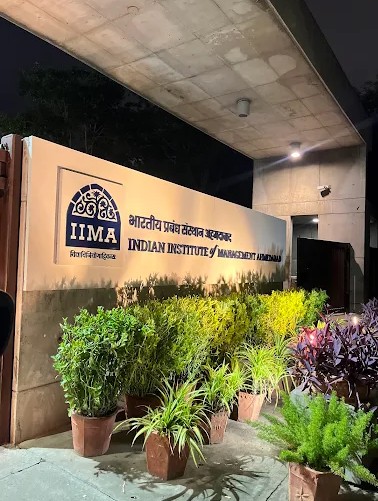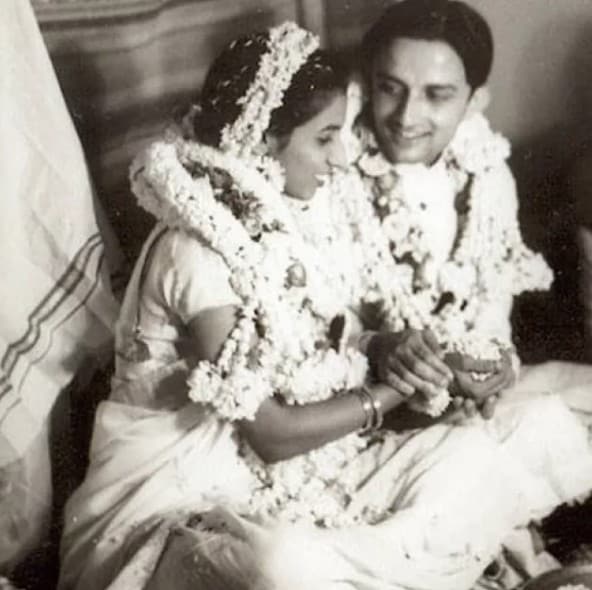
He was the man who took India to space, believed that science was meant for social transformation, and built institutions that shaped the country's intellectual landscape.
But behind the visionary physicist and institution builder, Dr Vikram Sarabhai, lies a story that reads almost like a classic Indian love drama, where intellect meets affection, and passion quietly alters the course of history.
According to psychoanalyst and author Sudhir Kakar's book, A Book of Memory: Confessions and Reflections (Penguin Random House 2011), the birth of India's second Indian Institute of Management (IIM Ahmedabad) wasn't just a tale of academic ambition or government vision, it was also the outcome of a love affair. Sudhir Kakar is the nephew of Kamla Chowdhry, a key figure in this saga of love and legacy.

IIM Ahmedabad. Photo: IIMA
A Man Of Vision
Born in 1919 into one of Ahmedabad's most influential industrialist families, Vikram Sarabhai had a privileged start. His father, Ambalal Sarabhai, owned one of the largest textile mills in India, and the Sarabhai family home was a meeting ground for thinkers, freedom fighters and intellectuals of the time. Growing up in this atmosphere, Vikram developed a deep curiosity for both science and human progress.
After school in Gujarat, he went on to study natural sciences at St John's College, Cambridge, UK. His academic brilliance was evident early on, and he later earned a PhD in cosmic ray research from the University of Cambridge. His doctoral work laid the foundation for India's cosmic ray and space research programmes, which he would pioneer in the years to come.
When he returned to India in the early 1940s due to the World War, Sarabhai joined the Indian Institute of Science in Bengaluru to work with Nobel laureate Dr CV Raman.
But what set him apart was not just his scientific mind, it was his remarkable ability to translate vision into institutions. He went on to found the Physical Research Laboratory (PRL) in 1947, which became the cradle of India's space journey.
A Meeting That Changed Everything
In the early 1950s, while expanding his interests beyond pure science, Sarabhai set up the Ahmedabad Textile Industry's Research Association (ATIRA) to modernise India's textile sector. It was here that he first met Kamla Chowdhry. Vikram Sarabhai was married to Mrinalini Sarabhai when he met Kamla Chowdhry.

Vikram Sarabhai married classical dancer Mrinalini on September 3, 1942.
Kamla was an extraordinary woman in her own right. Trained in psychology at the University of Michigan, US, she had been part of India's freedom movement and was deeply invested in social reform. When Sarabhai met her, he was captivated not just by her intellect, but also by her quiet strength and commitment to the country's development.
According to Sudhir Kakar's book, Kamla, who also happened to be a friend of Sarabhai's wife Mrinalini, left such a deep impression on him that he offered her a position at ATIRA. That professional relationship soon evolved into a personal one, leading to a connection that, as Kakar writes, lasted nearly two decades.
A Complicated Triangle
Kakar's book paints a picture of a bond that was intellectual, emotional and deeply human. Sarabhai and Kamla shared a passion for building institutions that could bridge the gap between science, management and social change. Yet, their relationship was far from simple.
Kamla, aware of the delicate nature of her involvement with a married man and a friend's husband, eventually began to feel uncomfortable with the situation. She apparently wanted to move to Delhi, to distance herself from the emotional complications of the relationship.
But Sarabhai, as the story goes, determined to keep her close, found another way to make her stay.
The Making Of IIM Ahmedabad
According to Kakar's account, it was Sarabhai's desire to keep Kamla in Ahmedabad that led him to work towards establishing a management institute in the city.
At that time, the Indian government and the Ford Foundation were exploring the idea of setting up institutions that could train managers for India's rapidly growing industries.
Sarabhai seized this opportunity. Using his influence, his family's connections, and his persuasive intellect, he convinced both the Ford Foundation and the Government of India that Ahmedabad was the ideal location. Thus, IIM Ahmedabad, the country's second IIM after Calcutta, was born in 1961.
Kamla Chowdhry became the institute's first faculty member and played a crucial role in shaping its culture and philosophy.
But...
Not everyone accepts this romantic interpretation of history.
Vikram Sarabhai's daughter, Mallika Sarabhai, herself an accomplished artist and activist, has spoken openly about her father's relationship with Kamla Chowdhry. While she acknowledged that they shared a 'close bond', she firmly rejected the idea that IIM Ahmedabad was brought to the city because of it.
Mallika said that attributing such a monumental institutional achievement to a personal relationship would be unfair and would diminish her father's vision for nation-building.
A Times Of India report quoted Mallika Sarabhai as saying, "Yes, Papa had a long, intimate relationship with Kamla, but to think that his great dream for a committed management cadre for the nation was just to keep her here is doing great injustice to his vision. I find psychiatrists tend to attribute sexual motives to very action in life!"
Mallika Sarabhai's comment was directed at Sudhir Kakar, who is a psychanalyst.
The story, though difficult to verify in its entirety, continues to intrigue historians and readers and now it seems social media alike.

Whether IIM Ahmedabad was the result of love, intellect, or both, one cannot deny the influence Kamla Chowdhry had on its early years. Her understanding of human psychology and her administrative acumen gave the institute its distinct identity.
Meanwhile, Vikram Sarabhai's legacy stretched far beyond this one story. He went on to establish the Indian Space Research Organisation (ISRO) in 1969, guided India's first satellite programme, and worked tirelessly to link technology with social progress.
His belief that science should serve humanity became the cornerstone of Indian scientific policy. His life also influenced a 2022 Sony Liv series, Rocket Boys.
Track Latest News Live on NDTV.com and get news updates from India and around the world

